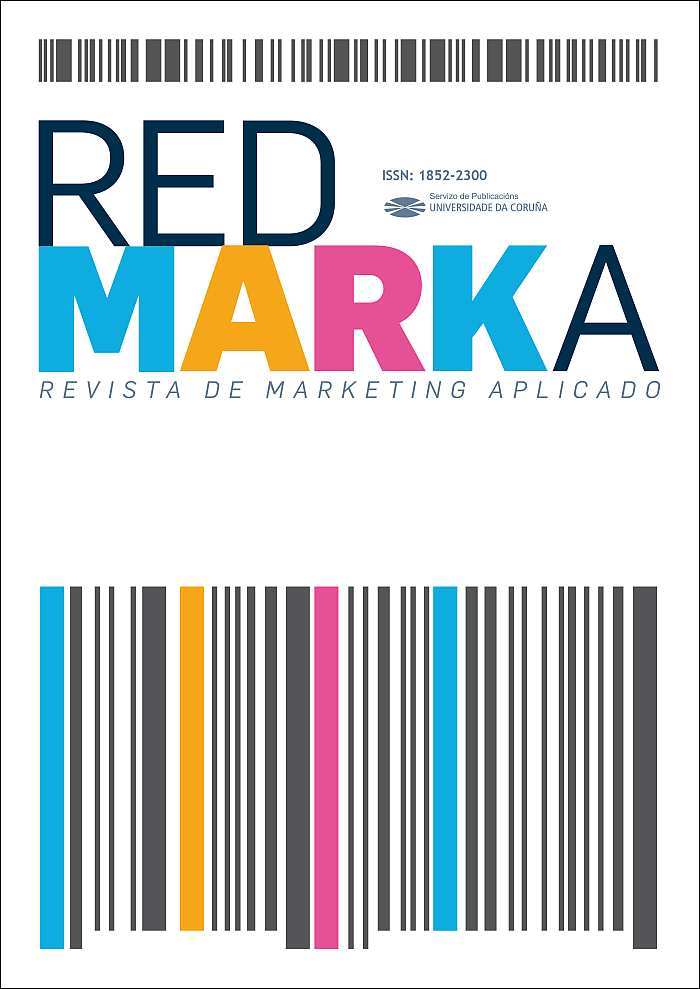New trends and narratives in fashion influencer marketing: professional profiles and consumption models Monograph introduction
Main Article Content
Abstract
The impact of social media on how fashion is communicated and consumed has brought about changes in company strategy. Action plans are now determined by influencers and the new audiences created by social media. The use of platforms to give brands greater online visibility is perceived by prosumers (online producer-consumers) as a natural extension of companies’ marketing activities, the objective of which is now to get their messages to go viral and reach the largest possible audience. The challenge, however, is how to match the growth in marketing opportunities created by social media to communication professionals’ ability to design and implement such strategies. This article examines influencer marketing as one of the main trends in fashion business communication today, analysing current and future uses, and the risks and benefits involved.
Keywords:
Downloads
Article Details
References
Bastien, V., & Kapferer, J. N. (2012). The Luxury Strategy: Break the rules of marketing to build luxury brands. Philadelphia: Kogan Page.
Castelló-Martínez, A., & Del Pino, C. D. (2015). La comunicación publicitaria con influencers. Redmarka: revista académica de marketing aplicado, 14, 21-50.
Díaz, L. (2017). Soy marca: quiero trabajar con influencers. Barcelona: Profit.
De Veirman, M., Cauberghe, V., & Hudders, L. (2017). Marketing through Instagram influencers: the impact of number of followers and product divergence on brand attitude. International Journal of Advertising, 36(5), 798-828. https://doi.org/10.1080/02650487.2017.1348035
Diaz Soloaga, P. (2014). Comunicación y Gestión de marcas de moda. Barcelona: Gustavo Gili.
González-Romo, Z. & Plaza-Romero, N. (2017). Estrategias de marketing digital en el sector de la moda de lujo. Interacción y redes sociales como herramienta necesaria. Hipertext.net, 15, 17-27.
Interactive Advertising Bureau (2019). Libro Blanco de Marketing de Infuencers.
Markerly. (2017). Instagram Marketing: Does Influencer Size Matter. Recuperado de: https://markerly.com/blog/instagram-marketing-does-influencer-size-matter
Mir-Bernal, P., Guercini, S., & Sádaba, T. (2018). The role of e-commerce in the internationalization of Spanish luxury fashion multi-brand retailers. Journal of Global Fashion Marketing, 9(1), 59-72.
Monserrat-Gauchi, J., & Sabater-Quinto, F. (2017). Planificación estratégica de la comunicación en redes sociales. Barcelona: UOC.
Pedri Pereira, L. & Schneider, T. (2017). A influência da comunicação das marcas de moda de luxo nas redes sociais no valor percebido pelo consumidor. dObra[s], 10(22), 94-113. https://doi.org/10.26563/dobras.v10i22.637
Pérez Curiel, C., & Clavijo Ferreira, L. (2017). Comunicación y Social Media en las Empresas de Moda. Prisma Social, (18), 226-258.
Pérez-Curiel, C., & Luque Ortiz, S. (2018). El marketing de influencia en moda. Estudio del nuevo modelo de consumo en Instagram de los millennials universitarios. adComunica, (15), 255-281.
Ramos, J. (2019). Marketing de influencers. XinXii.
Ramos-Serrano, M., & Martínez García, M. A. (2016). Personal style bloggers: the most popular visual composition principles and themes on Instagram. Observatorio (OBS*), 10(2), 89-109.
Rocamora, A. (2017). Mediatization and digital media in the field of fashion. Fashion Theory, 21(5), 505-522.
San Miguel-Arregui, P. & Sádaba-Garraza, M. (2014). Revisión de los Influentials en moda con la aparición de Internet: estudio del caso español a través de Stylelovely. Revista de comunicación, 13, 60-83.
Sanz Marcos, P, Pérez Curiel, C y Velasco Molpeceres, A.M. (2020). Hacia un cambio en el sector de moda y lujo. Del dominio del influencer a la marca: Gucci, Loewe y Margiela. Revista de Comunicación, 19(2), 263-284.
Segarra-Saavedra, J., & Hidalgo-Marí, T. (2018). Influencers, moda femenina e Instagram: el poder de prescripción en la era 2.0. Revista Mediterranea de Comunicación, 1(9), 313-325. https://doi.org/10.14198/MEDCOM2018.9.1.17
Tsai, H.-T., Huang, H.C., & Chiu, Y-L. (2012). Brand community participation in Taiwan: Examining the roles of individual-, group-, and relationship-level antecedents. Journal of Business Research, 65(5), 676-684.
Uzunoḡlu, E. & Kip, S. (2014). Brand communication through digital influencers: Leveraging blogger engagement. International Journal of Information Management, 34(5), 592-602.
Vinader-Segura R, Vicente-Fernández, P y Gallego-Trijueque S. (2019). La comunicación de Moda en Youtube. Análisis del Género Haul en el caso de Dulceida. Prisma Social, (24), 78-98.







